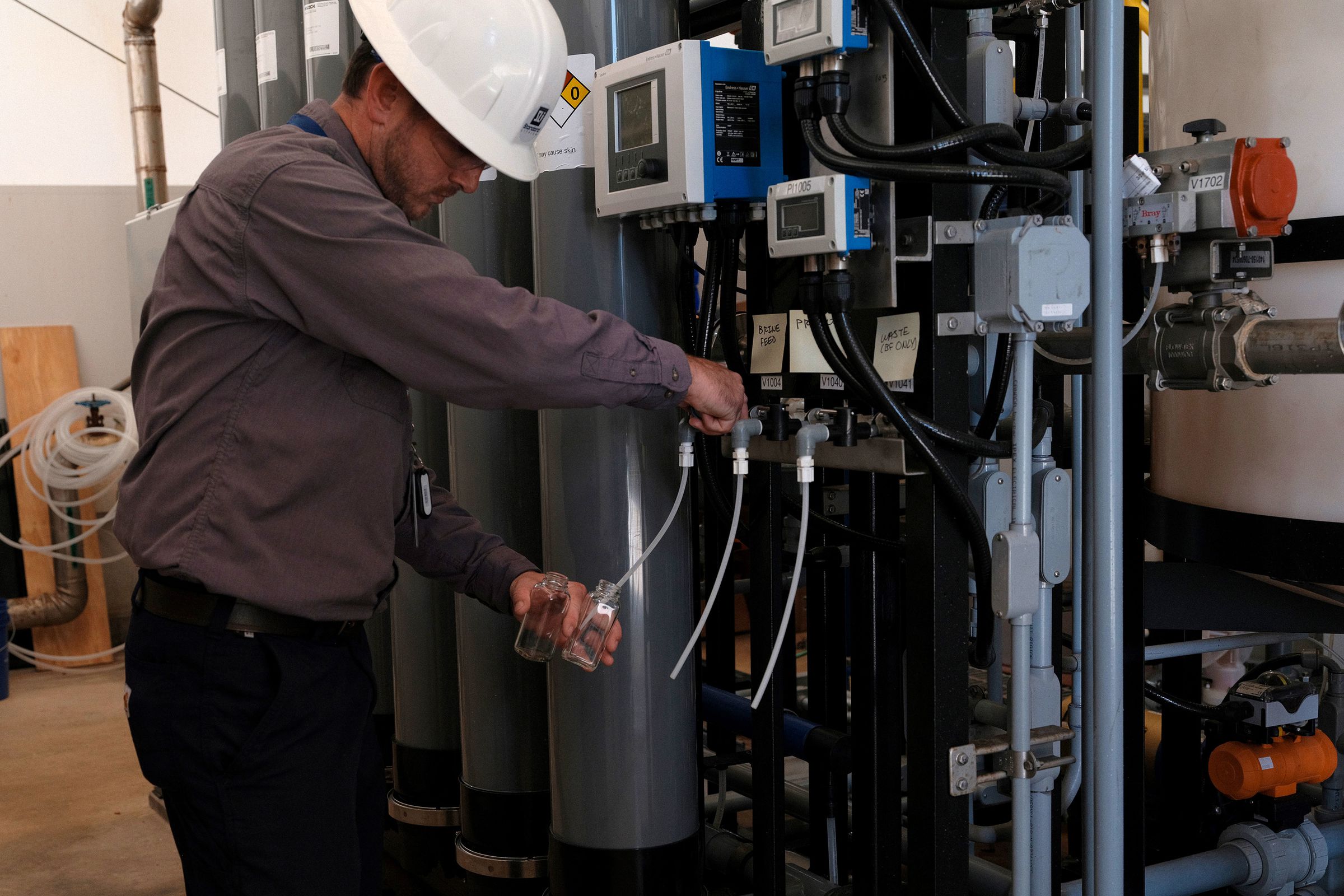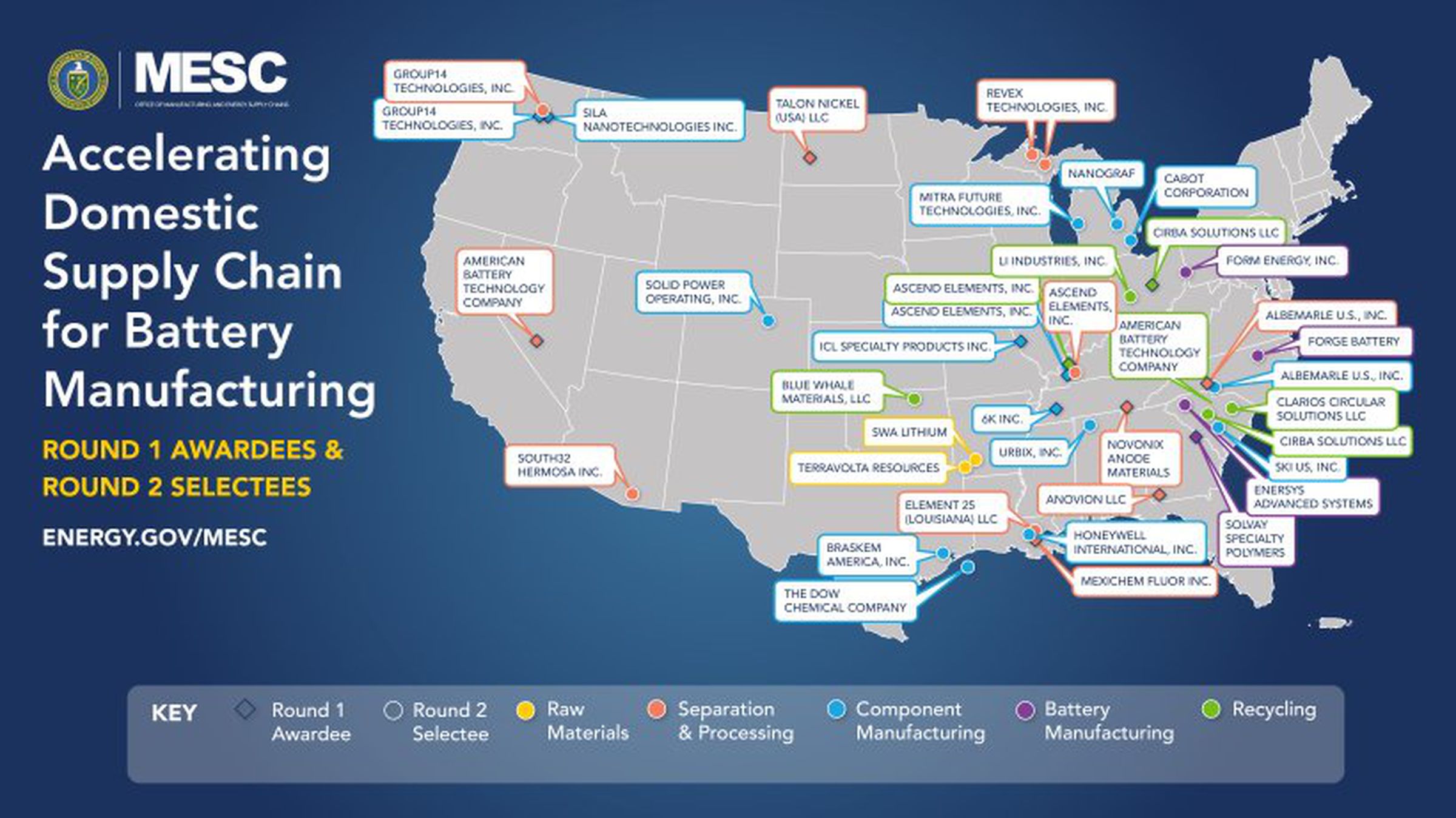US announces $3 billion in funding for new battery projects
September 20, 2024
The Department of Energy is funneling billion of dollars into building a domestic supply chain for batteries.

The US Department of Energy announced today plans to dole out more than $3 billion to over two dozen battery projects across 14 states. The money will go toward processing critical minerals, building batteries and their components, and recycling batteries. It’s part of the Biden administration’s push for more domestic manufacturing to support its climate goals.
Batteries are an increasingly hot commodity needed for electric vehicles and to store renewable energy from solar and wind projects. New battery facilities are cropping up all over the US thanks in part to federal support in the form of grants, loans, and tax incentives.
The funding comes from the Bipartisan Infrastructure Law passed in 2021. The 25 projects announced today have been selected for awards, but will still need to go through a negotiation process with the Department of Energy (DOE) and complete an environmental review to receive any money. The DOE predicts the funding will create 12,000 jobs, 8,000 of which would be in construction.
Two projects chosen to potentially receive the largest sums of money are meant to produce lithium from brine, each tentatively earmarked to receive up to $225 million in funding. A joint project between Standard Lithium and Equinor in Lewisville, Arkansas is expected to produce up to 45,000 metric tons per annum of battery-quality lithium carbonate over two decades.
The second project, led by TerraVolta Resources in the Texarkana region, is estimated to have the capacity to produce 25,000 metric tons of lithium carbonate equivalent each year once it’s operating. That’s enough lithium for some 500,000 EVs, according to the DOE project description.

This is the second round of funding in a program led by the DOE’s Office of Manufacturing and Energy Supply Chains (MESC). The first round of funding, announced in 2022, funneled $1.82 billion into 14 battery material and manufacturing projects.
China still leads global battery production with nearly 85 percent of the world’s capacity to produce battery cells. It also processes more of the critical minerals used in batteries than any other country. The Biden administration recently announced higher tariffs on batteries and battery parts from China, raising tariffs rates from 7.5 to 25 percent. And the administration structured the EV tax credit so that it only applies to vehicles with batteries manufactured in the US.
Search
RECENT PRESS RELEASES
Related Post




